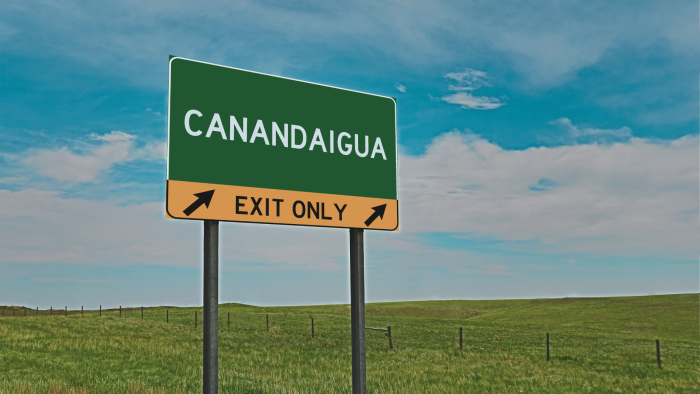People are somewhat out of touch with the solstices. That’s not necessarily a bad thing, since it means we’ve developed simple, reliable calendars and have moved beyond needing to know the exact position of the sun in our everyday lives. But the importance of the solstice to our ancestors meant they incorporated it into their societies in significant ways. Often they would build monuments to the solstices, using architecture to keep track of and emphasize the importance of that time of the year, while also establishing some kind of winter solstice ritual or rituals. In a testament to the durability of human construction, a lot of those structures are still around today, often with visitor centers or guided tours or both.
And let’s be clear here. You don’t have to be a 1970s flower child to enjoy reconnecting with solar events. These places and structures can have a profound effect on regular, sensible people as well. People with even a passing interest in history can find these things fulfilling as well.
We should also probably talk about what and when the winter solstice actually is. It’s basically the peak and valley of how long the sun spends in the sky. It usually falls on December 20th or 21st and is the day with the least sunlight. In the Northern Hemisphere, that is. If you were in the Southern Hemisphere that day, you’d be exeriencing the summer solstice, which is the day where the sun just doesn’t seem to set.
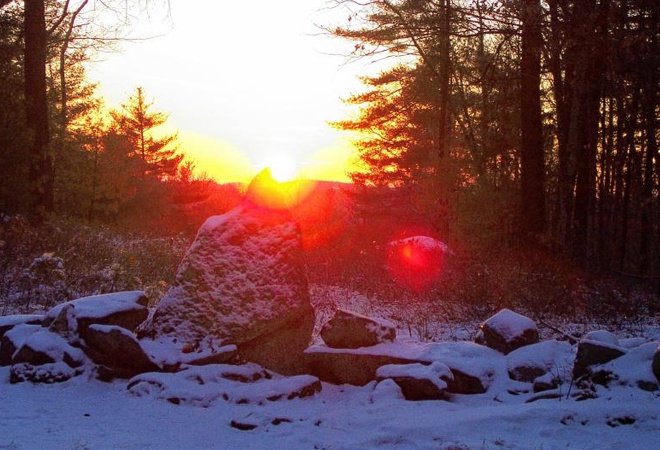
America’s Stonehenge
Our first pick is the most controversial entry on the list, as the debate of the site’s origin has been going on for about eighty years. The site’s almost completely constructed of stone, with walls, circles, markers, and underground rooms carefully constructed throughout the site. There are carvings of languages that no Native American could possibly have known about, let alone spoken, and carbon dating returns dates that range from 2000 B.C. to the 18th century. So we know that people have been inhabiting the area for 4000 years, but there’s really no reliable way to date the stone structures.
A popular theory implicates Irish monks fleeing Viking incursions, which would put the site somewhere between 900 and 1000 A.D. It’s a compelling theory, too, right up to the point where you need evidence to support it. It’s thin and barely extends beyond certain aesthetic similarities and a rich guy’s hunch. And while we’re intrigued by the theory, we have to admit, to the untrained eye, rocks piled on top of each other tend to look the same.
No matter its origin, the site is still worth visiting. Stones align with certain astronomical events and formations, and while there’s no explicit connection to either solstice, the staff opens the place up at sunrise on December 21st, so you’d be able to experience the shortest day of the year in one of the more curious places in the New England. Visit
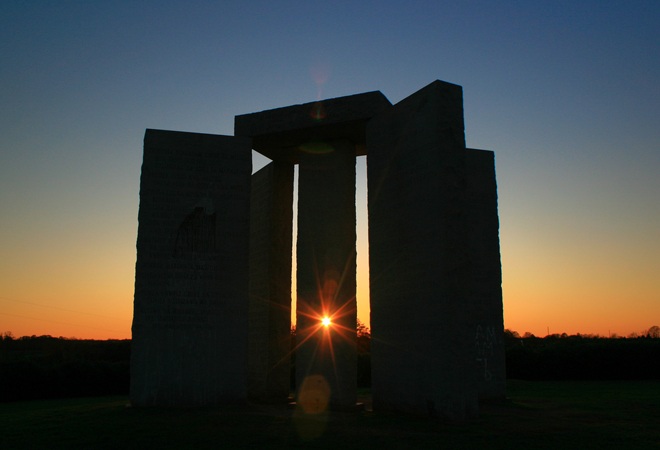
Georgia Guidestones
We unabashedly love mysteries and conspiracy theories. They’re fascinating, make for great fiction, and occasionally happen right in front of modern societies confused eyes. That’s the story with the Georgia Guidestones. A guy strolled into Elbert County, Georgia, wanting to commission a monument. He wouldn’t reveal his name or the organization he worked for, didn’t seem concerned about funding, and needed the monument to withstand even the most devastating cataclysm. On the monument would be instructions for the restoration of human society after an apocalypse, an insanely accurate solar calendar, a daily calendar, and a compass. If there were anymore cliches in this story, we’d be complaining Hollywood had run out of ideas.
Not unexpectedly, the guy ran into some trouble being taken seriously. A job at the scale he was requesting had never been attempted and the quarry where he made his first inquiries wouldn’t even consider the job until they had an outside guarantee of payment. It wasn’t until he went to the local bank to discuss financing that anyone thought the guy might not be playing the world’s most enormous practical joke. Even more support came when he chartered an airplane and spent the weekend looking for locations for his group’s monument.
This was all back in the 1980s and if it’s a joke, no one’s laughing. The stones now stand on the highest point in Elbert County. No one’s taken ultimate responsibility for the Guidestones, the money all got where it needed to go, and there was an intense amount of pride for all involved.
The reason you should go for the solstice is the “mail slot” cut into the center pillar. On solstices and equinoxes, the sunrise comes straight through the slot, marking the significance of those particular days. It’s so accurate you could rebuild the calendar around it, which is pretty much the whole point.
Wired and the BBC both have great articles on the Guidestones and we recommend taking the time to read both. There’s so much we don’t have space to cover and it’s a shame, because it really is a fascinating story. It’s hard to believe that these are really things you can visit and not a set piece in National Treasure or The Mummy. Visit

Goseck Circle
Besides the Georgia Guidestones (and possibly American Stonehenge), most of the entries on this list are going to be at least a thousand years old. Those were times when we looked to the stars to know when to plant, harvest, feast, or fast. Ancient people came up with fairly ingenious ways to keep track too, since it often meant the difference between life and death. But this entry’s going to be the oldest.
About 7000 years ago, the Stroke-Ornamented Ware Culture lived in the area of Europe that would eventually become Germany. They’re named after the pottery found in close proximity to the Goseck Circle and we know so little about them, their pottery’s pretty much the only thing we found that we could use to name them. Their circle is one of many other circles throughout Germany, Austria, the Czech Republic, Slovenia, and Croatia.
The Goseck Circle is the oldest known solar observatory. Its function seems to be slightly more specific than an all purpose observatory though, as on the winter solstice the sunrise and sunset are perfectly aligned with the circle’s entrances. If an observer were to sit in the center of the circle, they could watch the sunrise in the southeast opening and set in the southwest gate. The walkways also get smaller as they get closer to the center, which may have served to focus the sun’s rays into the center, possibly throwing a spotlight on significant rituals or individuals. There’s also evidence to suggest plenty of animal and human sacrifice at the location.
This is just us speculating, but if you combine the solstice events with the ritualistic sacrifice, you could have an interestingly lit heart-carving ceremony, which is definitely not out of the question when it comes to ancient cultures. We don’t suggest replicating that on your visit though. Visit
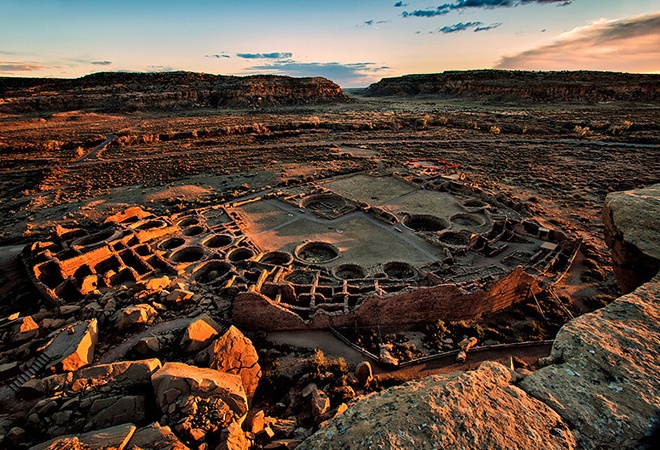
Chaco Culture National Historical Park
The first entry on this list talked a little about this idea, but our research for this feature showed us that Native Americans in North America had a far less permanent lifestyle than other cultures. That’s what makes the city in Chaco Canyon, New Mexico, such a treasure. It’s an ancient city that had the scale of a lot of contemporary European settlements, in both stone construction and population. We won’t have time or space to get to everything we’d like to, but there’s a great documentary on the city from when the History Channel still gave a shit about history.
Archaeologists today were confused as to why the city could even exist, since a city of its size and population would need a fairly substantial water supply and the area today is one of the drier sections of the United States. What they found was, the city’s foundation and demise were both due to climate change. Just before the city’s founding, a significant rainy period began in the area, allowing the normally nomadic tribes to settle down and begin building a permanent settlement. What grew was one of the most extraordinary cities of human civilization.
Since the inhabitants relied so heavily on rain for water, it makes that the people adopted a supernatural adoration for it and the gods they believed caused the rain. The kivas that dot the landscape and the cities are believed to have been underground chambers for religious ceremonies that were meant to appease the rain gods and keep their supply consistent.
The city has been of particular interest to The Solstice Project, an organization devoted to researching and preserving the Sun Dagger, the celestial calendar of the Pueblo. They’ve found a number of notable celestial events around the location. On the Fajada Butte, a spiral is carved into the stone and is framed by the Sun Dagger at sunrise on the winter solstice and split on the summer. At Wijiji, a building in the canyon but a little way away from the main ruins, the sunrise can be viewed coming through a crevice on the horizon.
Visiting the location requires a bit of deference to Native Americans, as it’s easy to forget that religious practices similar to the ones from Chaco are still practiced by tribes today. The kivas should be treated as active religious sites instead of dormant historical ones. Visit
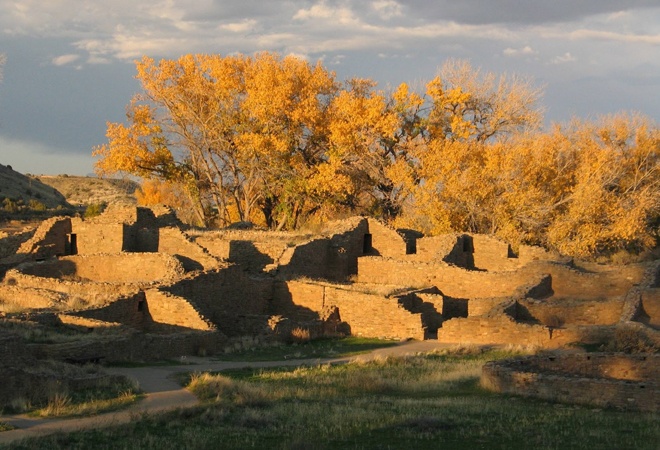
Aztec Ruins National Monument
Aztec Ruins National Monument is similar to the ruins in Chaco Canyon. It contains the stone ruins of an ancient Pueblo city that is also viewed as a stop on the great migration of the Pueblo people. We didn’t mention that about Chaco. Most of the Native Americans in the History Channel’s documentary view the ruins of their cities as stops on the great wandering journey of their tribes. The ruins at the National Monument seem to follow the same ideology. We should also quickly explain, the Aztec part of the monument’s name is a misnomer, since it was the Pueblo who built the place.
These ruins aren’t as expansive as others, but they contain excellent examples of ancestral Pueblo architecture, making them invaluable when it comes to studying and understanding the lives of people in North America in at the beginning of the last millennium. From what people who have studied these ruins and others like them can tell, the solstice was incredibly important to the ancient Pueblo, and often influenced the design of their buildings.
At sunset on the winter solstice, if you stand in the east corner of the great house, designated Aztec’s West Ruin, you can watch the sun align with the west corner of the structure. Since the great house was most likely used as some kind of community gathering place, it’s likely that the alignment marked times on the Pueblo calendar and may have played a part in Pueblo rituals. The Pueblo religious tradition still incorporates trained sunwatchers, who read the movement of the sun. There’s little reason to think the people in the great houses of the early 1000s wouldn’t have had a use for a similar job.
Today, the National Parks Service runs the Winter Solstice Sunset Observation event, where anyone and everyone are welcome to come experience the alignment. Afterwards, guests are treated to cookies, hot chocolate, and a special presentation about Pueblo winter traditions and December astronomy. Visit
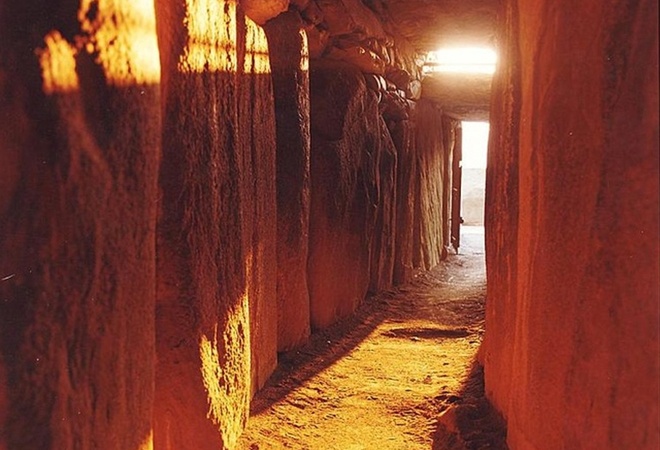
Newgrange
Most of the other locations on this list have other significant dates and functions. There are other sunrises, sunsets, eclipses, or other celestial events that the structures signify. As far as we know, this isn’t the case at Newgrange, a 5000-year-old cairn in County Meath, Ireland.
When it was first rediscovered, Newgrange was thought to be a burial site, whether as a tomb or a venue for burial rituals. Inside the cairn is a long hallway with large stones on either side and above. The hallway ends in a small chamber, with three minor rooms attached. Bone fragments were found in the interior chamber, so it seemed like the case was about as straightforward as you can expect from Gaelic tribes of five thousand years ago. From 1699 until the 1960s, that’s how people thought of the site. The change came in 1967, when Prof. Michael O’Kelly rediscovered the winter solstice event.
There’s a window, called the roofbox, above the entrance hallway that perfectly frames the rising sun on the winter solstice, sending a long, bright beam of sunlight into the interior chamber and illuminating it for a short 17 minutes. When the mound was first built, this would have been the only natural light to reach most of the hallway and chamber, making the winter solstice one of, if not the, most important day for ancient visitors to Newgrange.
Today, you can visit the site any day and get a guided tour, which includes a simulation of the solstice event. Though the guides readily admit that even with modern technology and lighting, they can’t faithfully replicate the effects of the sunrise. The site offers a winter solstice event every year, but attendance is based on a lottery. Roughly 30,000 people enter to attend the event, but only 50 are admitted every year, though we get the limitations. If 30,000 people flooded the place every year, Newgrange probably wouldn’t last another decade, let alone 5000 years. Visit


